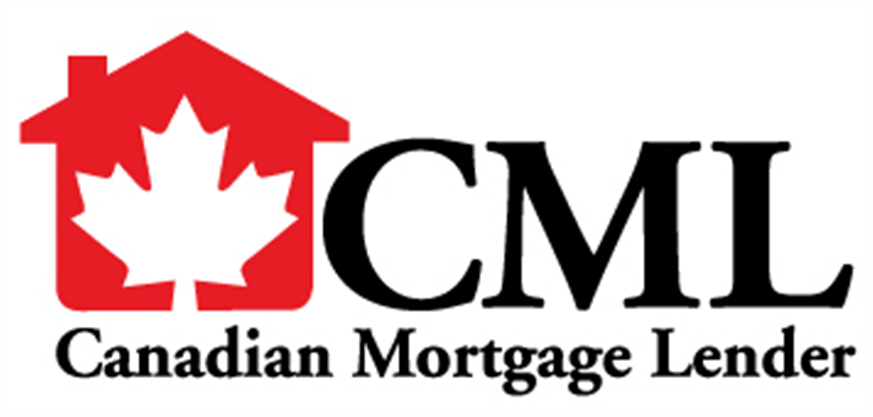The mortgage process can be intimidating for homeowners, and some financial institutions do not make the process any easier. They may even leave you with unanswered questions.
But I’m here to help!
I’m a VERICO CML Canadian Mortgage Lender Inc Mortgage Professional and I’m an independent, unbiased, expert, here to help you move into a home you love.
I have access to mortgage products from over forty lenders at my fingertips and I work with you to determine the best product that will fit your immediate financial needs and future goals.
VERICO mortgage professionals are Canada’s Trusted Experts who will be with you through the life of your mortgage.
I save you money by sourcing the best products at the best rates – not only on your first mortgage but through every subsequent renewal. So whether you're buying a home, renewing your mortgage, refinancing, renovating, investing, or consolidating your debts — I’m the VERICO Mortgage Advisor who can help you get the right financing, from the right lender, at the right rate.
Bank of Canada: Bank of Canada holds policy rate at 2¾%
The Bank of Canada today maintained its target for the overnight rate at 2.75%, with the Bank Rate at 3% and the deposit rate at 2.70%.
Since the April Monetary Policy Report, the US administration has continued to increase and decrease various tariffs. China and the United States have stepped back from extremely high tariffs and bilateral trade negotiations have begun with a number of countries. However, the outcomes of these negotiations are highly uncertain, tariff rates are well above their levels at the beginning of 2025, and new trade actions are still being threatened. Uncertainty remains high.
While the global economy has shown resilience in recent months, this partly reflects a temporary surge in activity to get ahead of tariffs. In the United States, domestic demand remained relatively strong but higher imports pulled down first-quarter GDP. US inflation has ticked down but remains above 2%, with the price effects of tariffs still to come. In Europe, economic growth has been supported by exports, while defence spending is set to increase. Chinas economy has slowed as the effects of past fiscal support fade. More recently, high tariffs have begun to curtail Chinese exports to the US. Since the financial market turmoil in April, risk assets have largely recovered and volatility has diminished, although markets remain sensitive to US policy announcements. Oil prices have fluctuated but remain close to their levels at the time of the April MPR.
In Canada, economic growth in the first quarter came in at 2.2%, slightly stronger than the Bank had forecast, while the composition of GDP growth was largely as expected. The pull-forward of exports to the United States and inventory accumulation boosted activity, with final domestic demand roughly flat. Strong spending on machinery and equipment held up growth in business investment by more than expected. Consumption slowed from its very strong fourth-quarter pace, but continued to grow despite a large drop in consumer confidence. Housing activity was down, driven by a sharp contraction in resales. Government spending also declined. The labour market has weakened, particularly in trade-intensive sectors, and unemployment has risen to 6.9%. The economy is expected to be considerably weaker in the second quarter, with the strength in exports and inventories reversing and final domestic demand remaining subdued.
https://www.bankofcanada.ca/2025/06/fad-press-release-2025-06-04/
Statistics Canada: Housing use of immigrants and non-permanent residents in ownership and rental markets
Understanding the housing use of immigrants and non-permanent residents (NPRs) is important for developing effective housing policies and urban planning strategies. Using 2021 Census data, this study estimates housing unit occupancy ratesdefined as the number of dwellings per 1,000 peoplefor immigrants and NPRs. These rates reflect housing use constrained by factors such as financial resources, living preferences and housing supply availability.
The analysis of the 2021 Census data shows that immigrants typically exhibit higher housing occupancy in the ownership and rental markets compared with Canadian-born individuals. On average, immigrants occupy 310 owned units and 151 rental units per 1,000 people, totalling 461 housing units, compared with 397 housing units for Canadian-born individuals. NPRs, meanwhile, occupy 41 owned units and 316 rental units per 1,000 people, for a total of 357 housing units.
As immigrants spend more time in Canada, their reliance on the rental market decreases and homeownership increases. In their initial years after admission, immigrants have lower housing occupancy rates than Canadian-born individuals. Over time, however, their housing occupancy rises significantly, driven by a substantial growth in homeownershipunderscoring the lasting impact of immigration on the ownership market.
The findings also suggest that an increase in immigration would particularly heighten demand for single-detached homes in the ownership market and for rental apartments, while a rise in NPRs would primarily boost demand for rental apartments. Additionally, immigrants and NPRs are both more likely to own homes in smaller municipalities than in larger municipalities, emphasizing varying impacts of immigrants and NPRs across different municipal contexts.
https://www150.statcan.gc.ca/n1/pub/36-28-0001/2025005/article/00003-eng.htm
TD: How many more Bank of Canada rate cuts could come this year?
By TD Economics
Key Takeaways:
The Bank of Canada is set to make another rate announcement on June 4
TD Economics predicts that the central bank will deliver two more rate cuts this year, though the exact timing is up in the air
When the central bank cuts its rate, it can become cheaper for Canadians to borrow money
If youre a homeowner with a mortgage or someone looking to buy, youll likely be wondering what the Bank of Canada (BoC) is going to do this year when it comes to interest rates.
Thats because whenever the BoC cuts its lending rate, it can become cheaper for Canadians to borrow money. And when the BoC raises its lending rate, it can become more expensive.
According to TD Economics, the central bank might offer some rate relief in the coming months.
The ongoing softness in the labour market should open the door for the BoC to cut interest rates two more times this year, despite the recent uptick in inflation.
Amid trade tensions with the U.S., Andrew Hencic, Director and Senior Economist at TD Economics, said two cuts of 25 basis points each could help support the economy without putting too much more pressure on inflation. That means the current rate of 2.75% could come down to 2.25% by the end of the year.
We think that enough slack has accumulated in the economy that theres space for the central bank to cut its lending rate a little bit more without too much inflationary pressure coming through, Hencic said.
https://stories.td.com/ca/en/article/bank-of-canada-interest-rate-prediction-june-2025
































